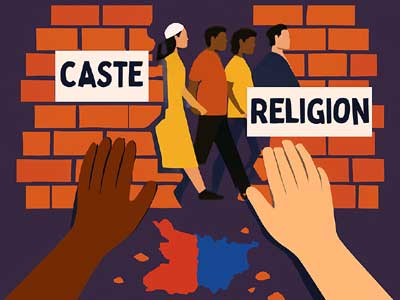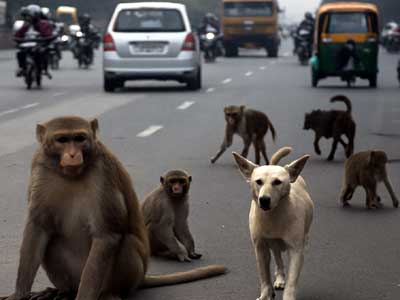It all started with me getting lost in Chennai last winter. Not in thought—though that too happens once in a while—but in actual space. As I bumbled through unfamiliar streets, I collided with a leather belt and wallet vendor. Naturally, I asked for directions—in English. He shot back a reply in Hindi, which mildly shocked me because the accent had that familiar sweet, tangy flavour of Braj. Suspicious now, I asked the obvious question, “Bhaiya, kahaan se ho?” He hesitated. “Agra,” he muttered. “Kaunse gaon?” I pressed. “Etaura ke paas!” he whispered, as if revealing state secrets. Turns out, his whole village might’ve migrated here!!
In South Indian cities, while the streets echo with Tamil, Telugu, Kannada and Malayalam, behind the scenes—and often behind the gol gappa stalls—you’ll find a medley of accents from Bihar, Jharkhand, and Eastern UP. The plumbing in Coimbatore? Likely fixed by someone from Gaya. The spicy paan you tried in Mysore? Probably rolled by a Chaurasia who learned the trade in Varanasi. Even in the lush coffee estates of Coorg, you’ll hear whispers of Bengali, Assamese, and occasionally, Bhojpuri.
A young optician, Naved, explained the linguistic mystery to me, “South Indian Muslims understand Hyderabadi Hindustani. It’s like Bollywood with a filter.” Apparently, even in Kerala—land of backwaters and communism—you can bargain in Hindustani and walk away with coconut oil and clarity.
So where’s the problem? Too many hands spoil the khichdi, they say. Likewise, an oversupply of dialects adds to the collective cacophony. In India, language isn’t just a means of communication. It’s a full-blown identity crisis. A weapon of mass distraction. A political rallying cry. A badge of honour. And, when things get heated, an excellent excuse to throw a few punches.
Let’s rewind to 1956—Pandit Nehru, in a moment of post-colonial idealism, approved the reorganisation of states based on language. Instead of making governance easier, it gave every local leader a shiny new toy: regional pride. And with it came the tribal drumbeats of “My language is better than yours!”
Fast forward to today, and you’ll find Tamil Nadu still flipping the proverbial bird to Hindi. Karnataka, ever the trend-follower, is taking notes. Meanwhile, the idea of Hindi as the ‘national language’ remains about as successful as our flight to the moon.
Now and then, some celebrity-turned-politician like Kamal Haasan picks up the mic and says something mildly provocative about Tamil or Kannada, and suddenly, Twitter becomes ground zero for the next linguistic World War.
Let’s not forget the Shiv Sena’s long-standing tradition of hosting warm welcomes/riots for Hindi-speaking North Indians in Mumbai. Because nothing says local pride like bashing up cab drivers who dare to say "bhaiya" instead of "dada".
The Education Ministry, meanwhile, has thrown in the New Education Policy, which talks about a ‘three-language formula’ like it’s the Da Vinci Code. It promotes multilingualism, sure—but the implementation is like a group project where nobody does their part and the teacher still gives everyone a B+.
Ironically, the real lingua franca of the nation is Hindustani—a gloriously chaotic blend of Hindi, Urdu, and local spices. It’s the language of Bollywood heartbreaks, WhatsApp forwards, and that one aunty Gyanbooti who watches every saas-bahu serial religiously. It transcends borders but sadly gets lumped with Northern imperialism by those looking to score political points.
And yet, floating above all this is English—the crowned monarch of Modern India. It’s no longer just a language. It’s a status symbol, an entry pass to five-star lobbies and TED Talks. Speak fluent English and you’re automatically smarter, richer, and better-looking.
So what’s the way forward? Certainly not more language policing or identity crusades. Perhaps it’s time to embrace what already works—a fluid, adaptive, Bollywood-fuelled Hindustani that belongs to no one yet feels like home to everyone. One that doesn’t just speak, but sings across regional divides.


















Related Items
How foul language became our national safety valve!
Agra’s famous Vaidya Gali wears a deserted look on Dhanwantari Jayanti
Why do tourists flee Agra after visiting Taj Mahal?